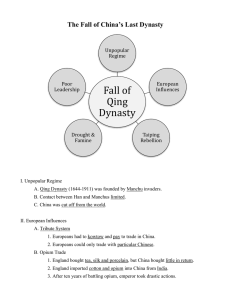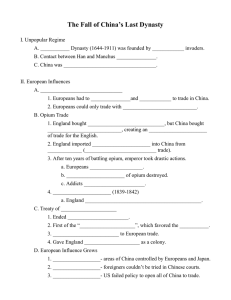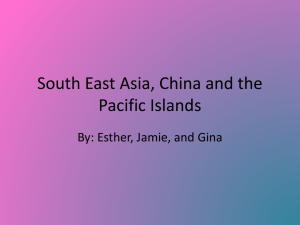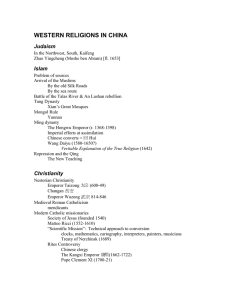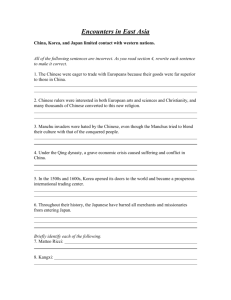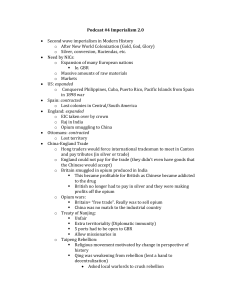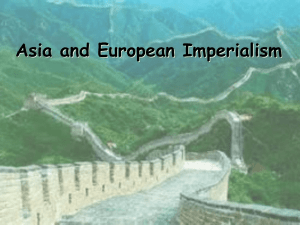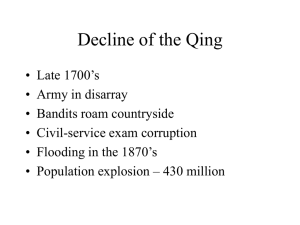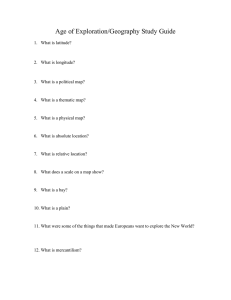Fall of Qing Dynasty The Fall of China’s Last Dynasty
advertisement
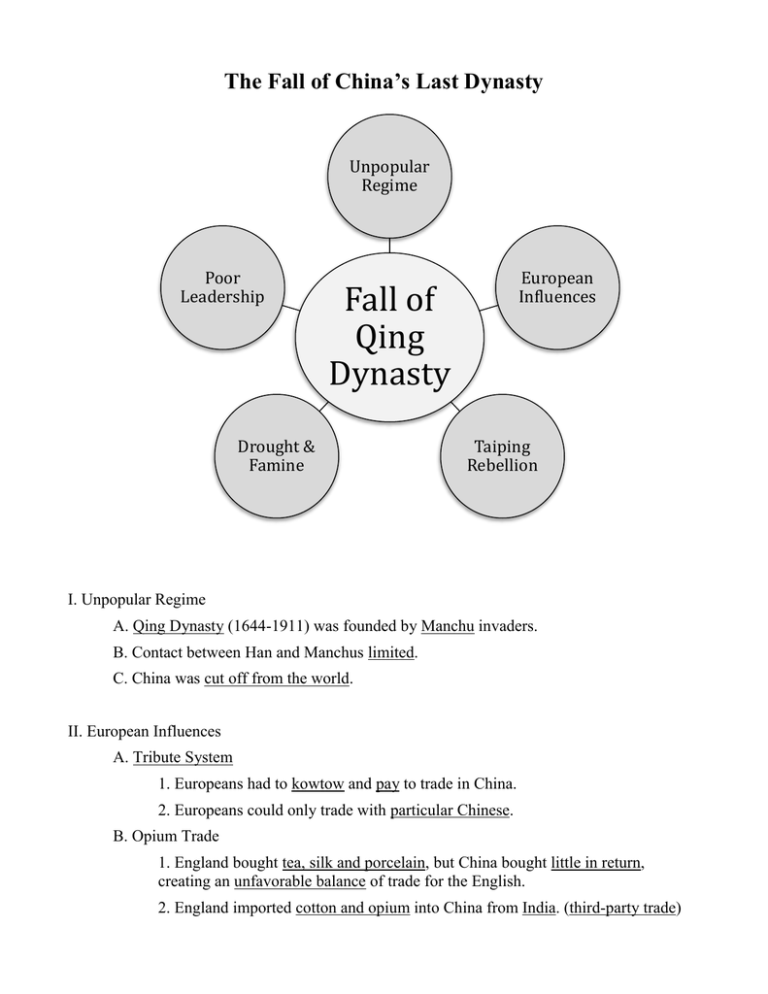
The Fall of China’s Last Dynasty Unpopular Regime Poor Leadership European Influences Fall of Qing Dynasty Drought & Famine Taiping Rebellion I. Unpopular Regime A. Qing Dynasty (1644-1911) was founded by Manchu invaders. B. Contact between Han and Manchus limited. C. China was cut off from the world. II. European Influences A. Tribute System 1. Europeans had to kowtow and pay to trade in China. 2. Europeans could only trade with particular Chinese. B. Opium Trade 1. England bought tea, silk and porcelain, but China bought little in return, creating an unfavorable balance of trade for the English. 2. England imported cotton and opium into China from India. (third-party trade) 3. After ten years of battling opium, emperor took drastic actions. a. Europeans detained. b. 20,000 crates of opium destroyed. c. Addicts forcibly treated. 4. Opium War (1839-1842) a. England retaliated and defeated China. C. Treaty of Nanjing 1. Ended Opium War. 2. First of the “unequal treaties”, which favored the Europeans. 3. Opened China up to European trade. 4. Gave England Hong Kong as a colony. D. European Influence Grows 1. Spheres of influence- areas of China controlled by Europeans and Japan. 2. Extraterritoriality- foreigners couldn’t be tried in Chinese courts. 3. Open Door Policy- US failed policy to open all of China to trade. III. Taiping Rebellion (1851-1864) A. Causes 1. Weak government 2. Changes caused by Europeans B. Leader 1. Hong Xiuquan, a village teacher. 2. Thought he was Jesus’ brother. C. Heavenly Kingdom of Great Peace 1. Territory gained by rebels. 2. 1/3 of China taken over. 3. Promoted women’s rights, religious reform, social equality and economic cooperation. D. Outcomes 1. Europeans helped crush rebellion. 2. 30 million dead. 3. Qing Dynasty weakened. 4. European influence increased. IV. Population and Ecology A. Population increased by _______ %, but cultivated land only increased by _______%. Statistics 1741 population 142 million 1851 population 432 million 1701 farmland 8 million ching 1850 farmland 10 million ching (1 ching = 15 acres) B. Famine 1. Drought led to famine from 1876 to 1879. 2. Government was too small to help. 3. 9.5 million died V. Poor Leadership A. Ci Xi, the Dowager Empress 1. Concubine who produced the emperor’s only son. 2. She was the “power behind the throne” while her son and nephew were emperor. 3. She supported the Boxers, the “Society of Righteous and Harmonious Fists” who unsuccessfully rebelled against foreigners in 1900. 4. At the time of her death, she chose Pu Yi, the emperor’s three-year-old nephew, as the new emperor. B. Pu Yi, the Last Emperor 1. Took the throne in 1908 at age of three. 2. Abdicated after the Republican Revolution of 1911. 3. Later ruled Manchukuo (Manchuria) as a puppet of the Japanese government during WWII. 4. Spent his last years in Communist China as a gardener and librarian. VI. Republican Revolution of 1911 A. Sun Yat-sen: European-trained physician who led the revolution. 1. Sun’s Three Principals of the People a. Nationalism b. Democracy c. Livelihood B. Yuan Shikai: Manchu general who became president after joining the revolution. 1. Tried to make himself emperor. 2. Died in 1916, throwing country into chaos.
